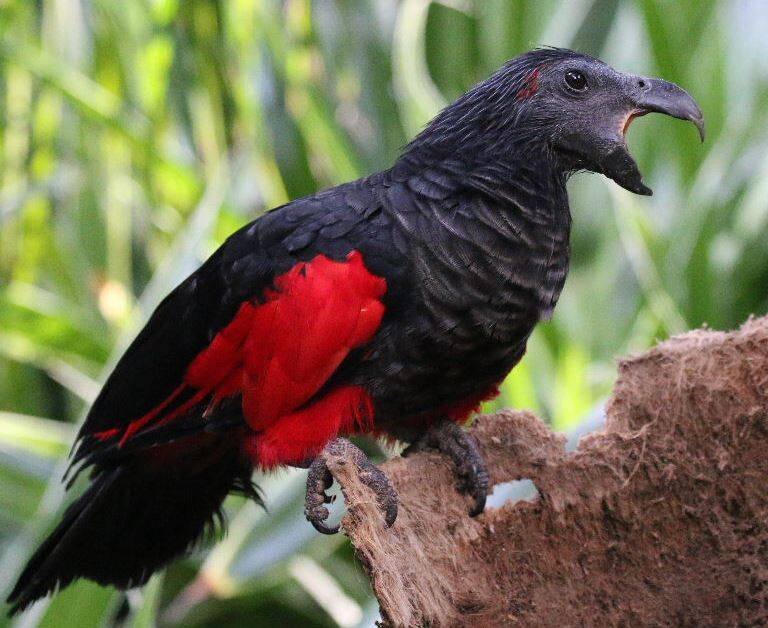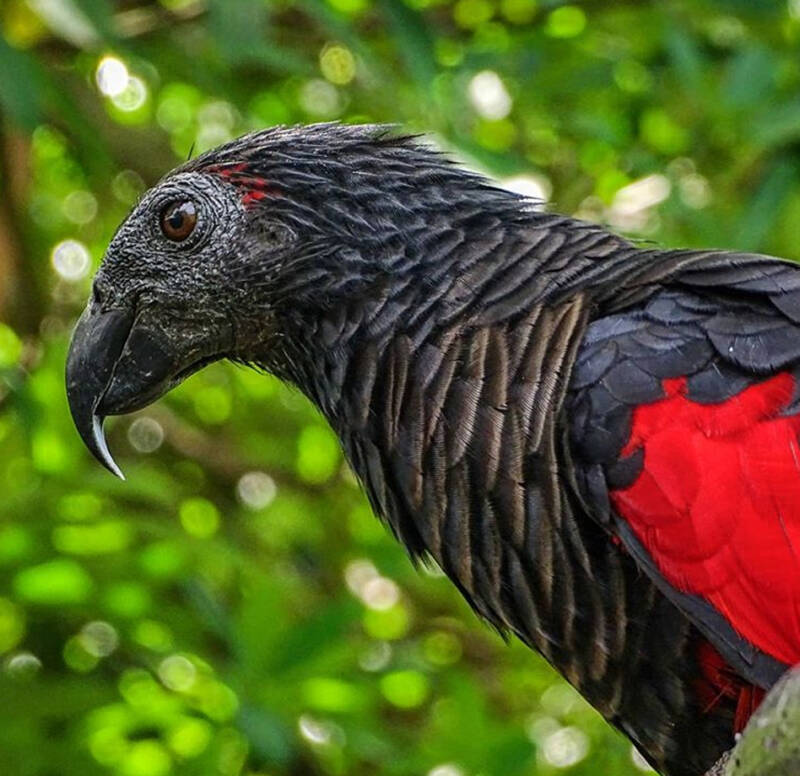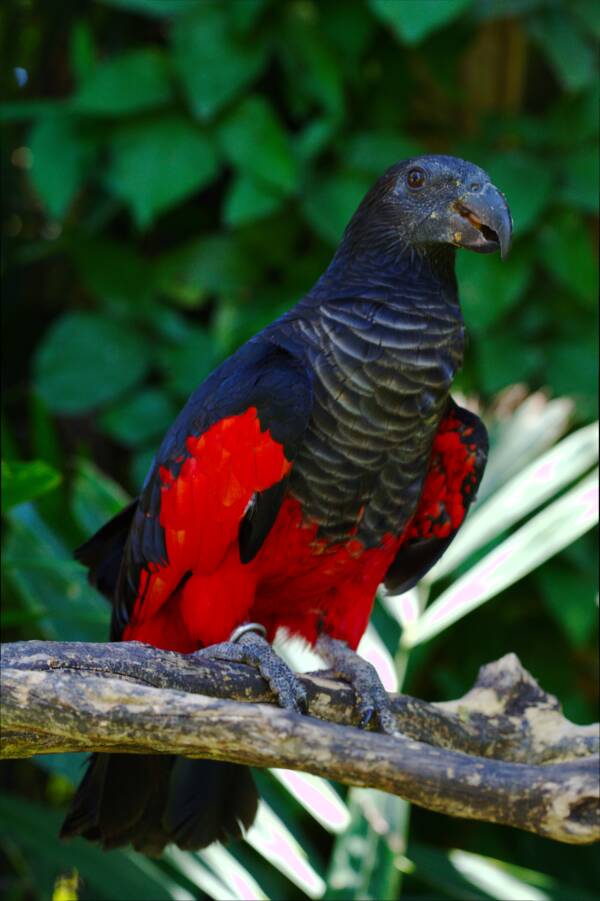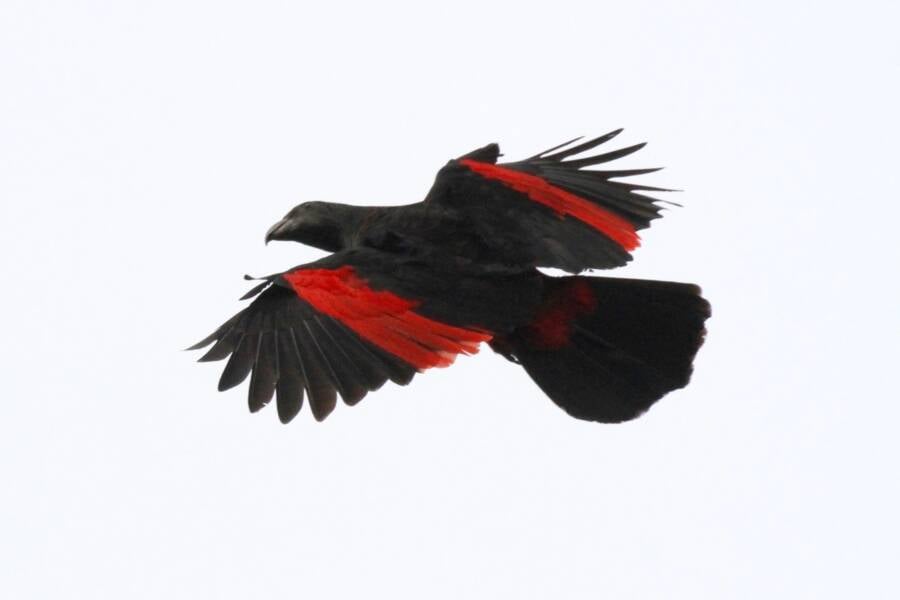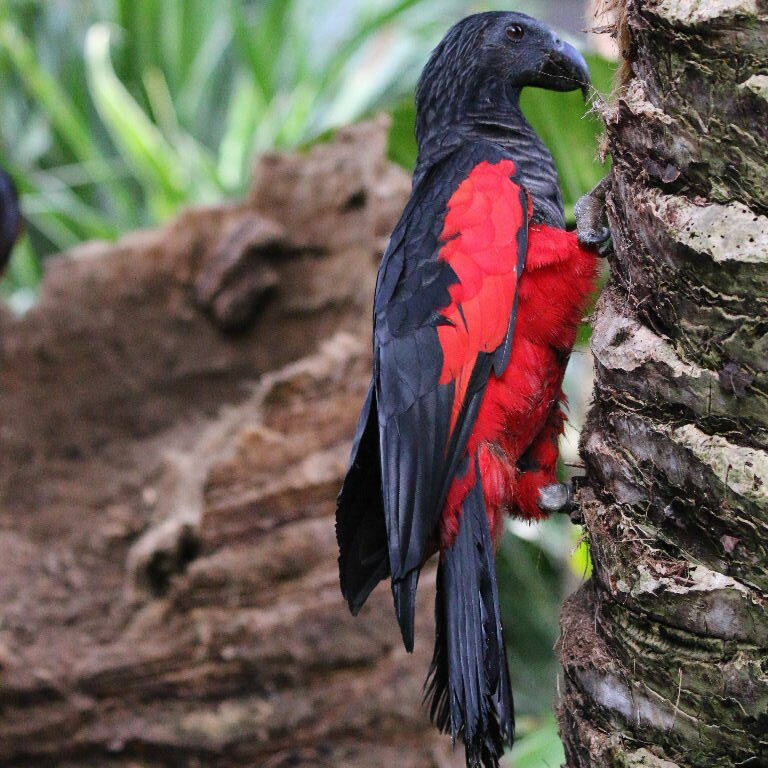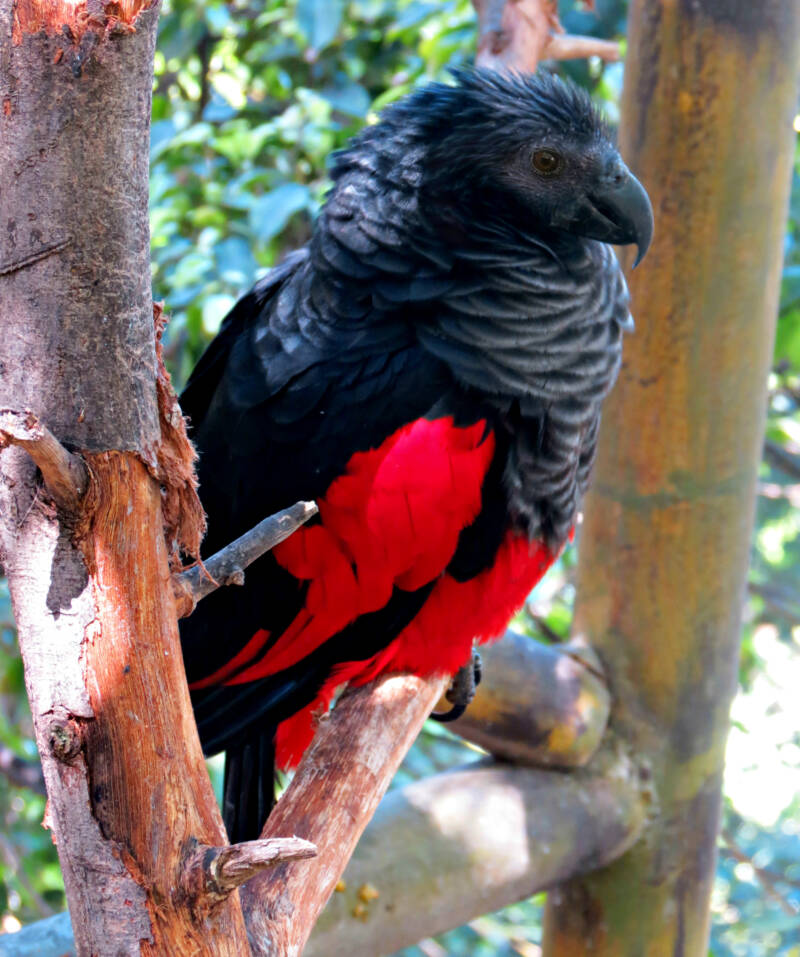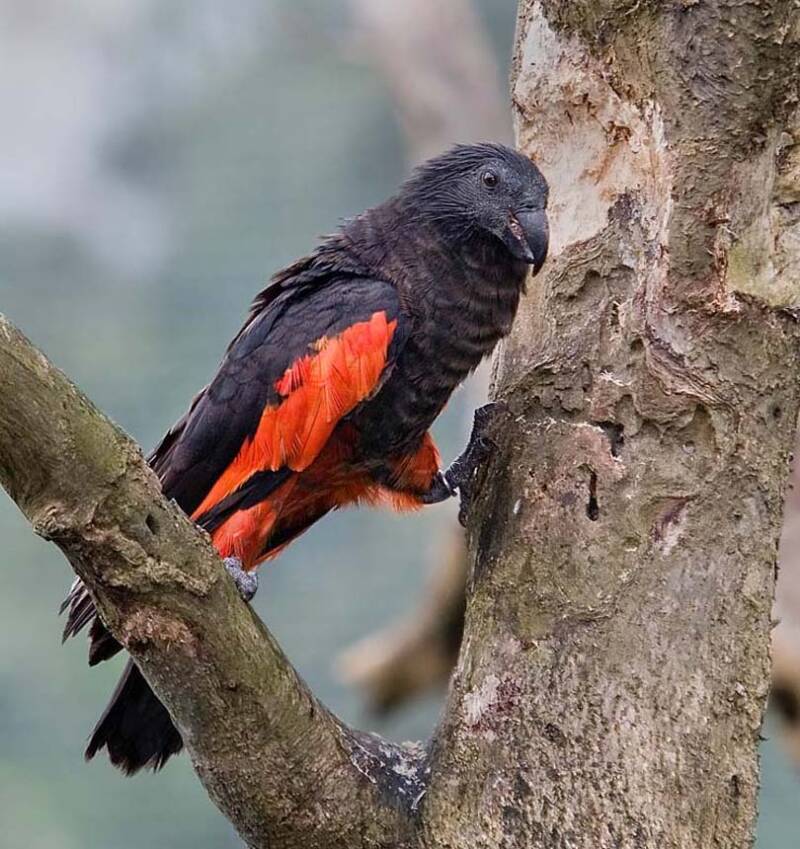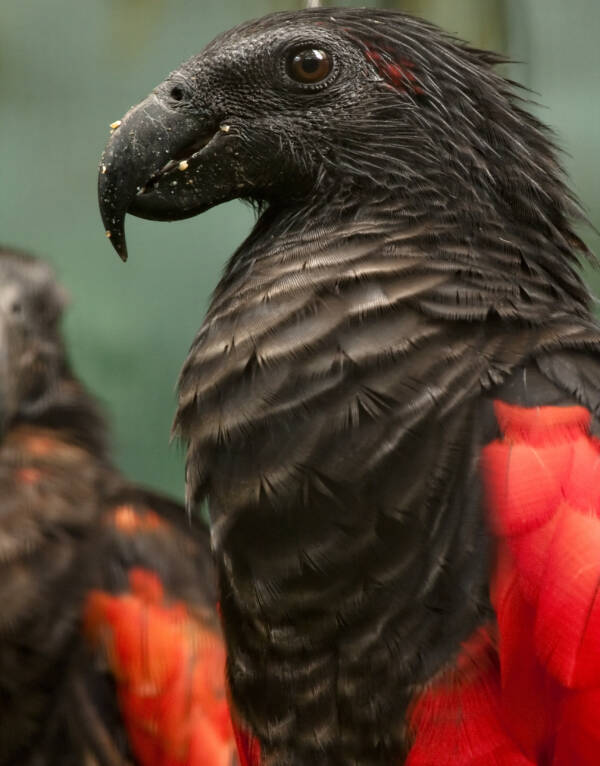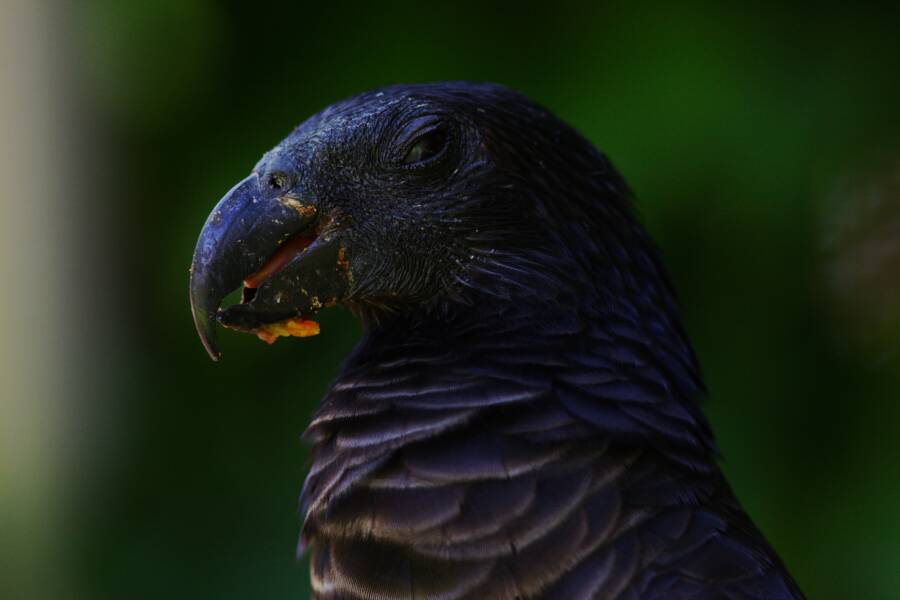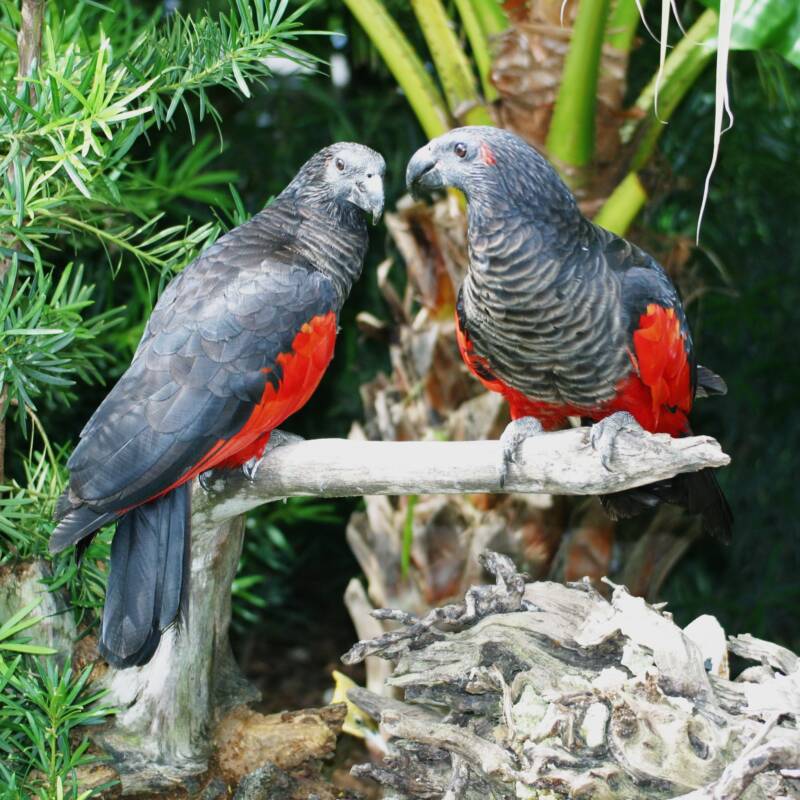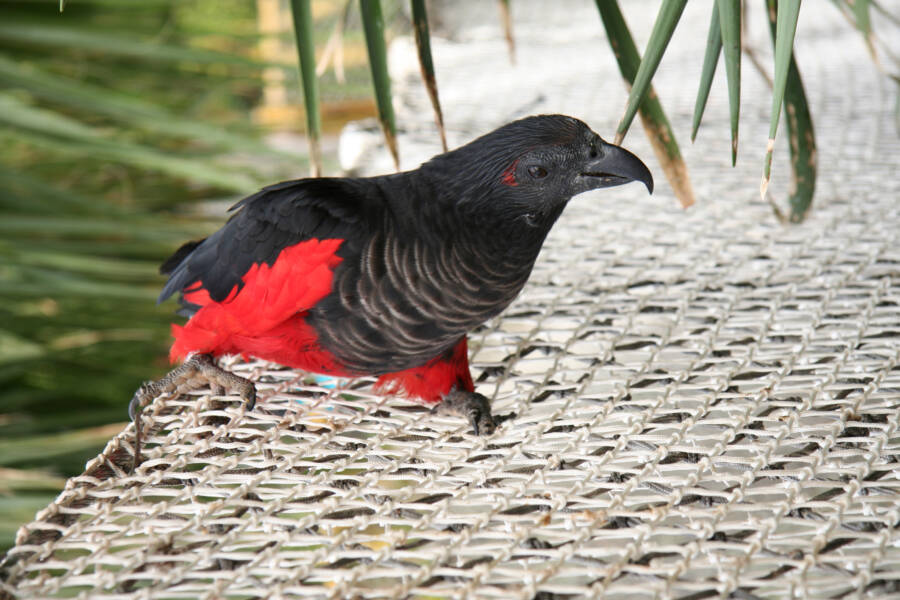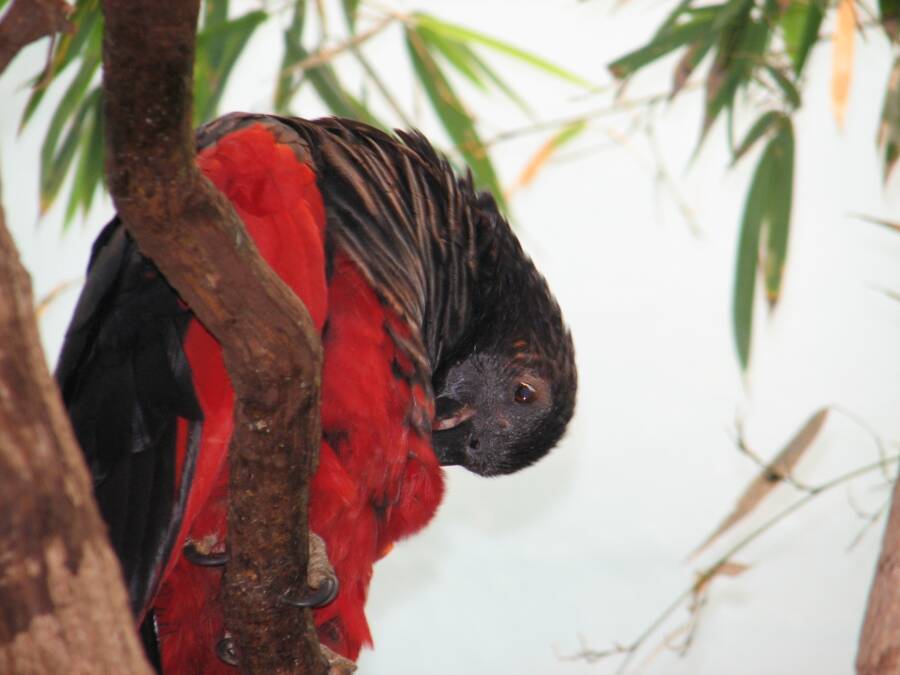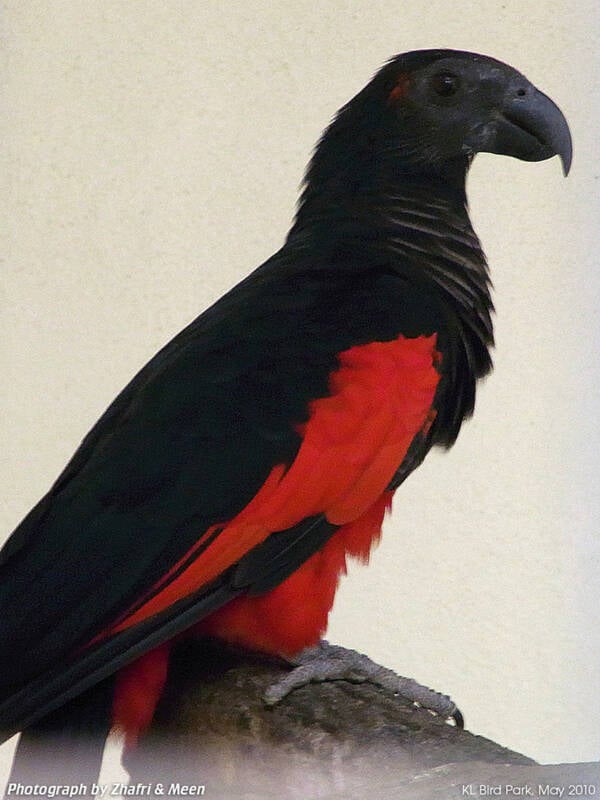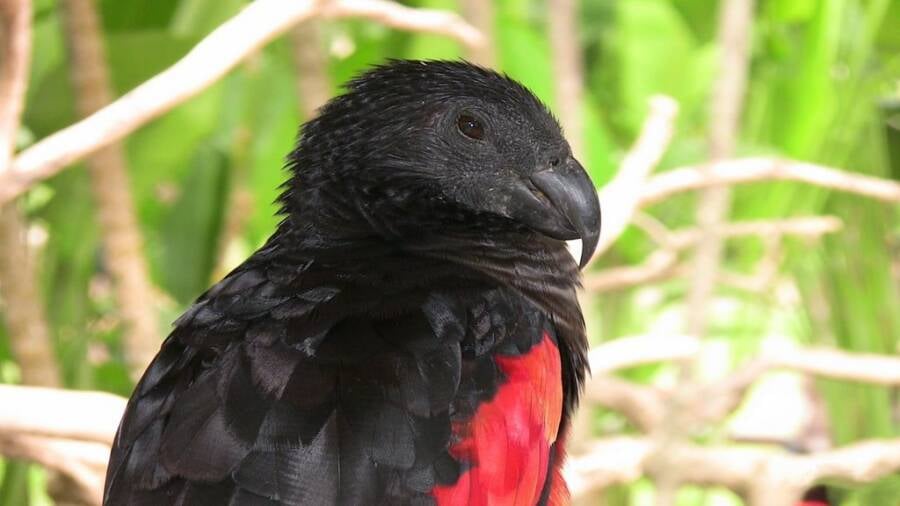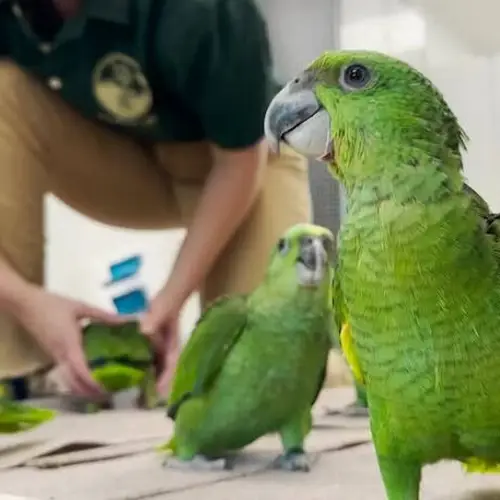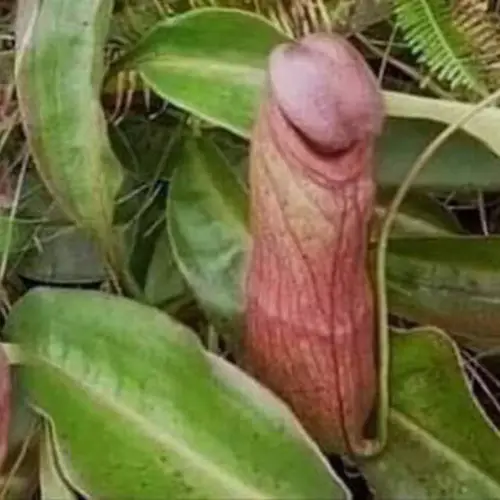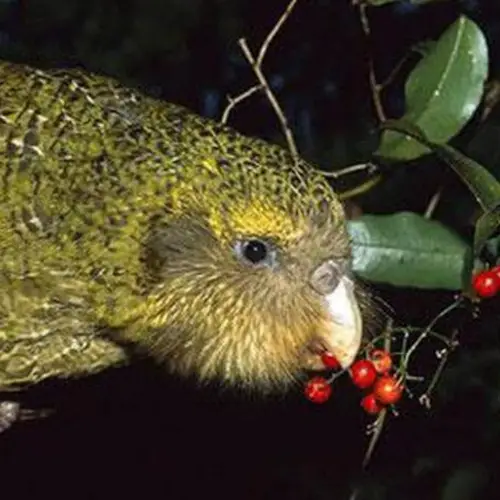Commonly known as the Dracula parrot, Pesquet's parrot is an endangered bird that's only found in the rainforests of New Guinea.
It's likely the rarest, most gothic bird in existence — and it's so aptly named the Dracula parrot.
Its scarlet red belly is surrounded by a sleek black plumage and gray scaling, like a cape. Its vulture-like hooked beak protrudes from its small bald head set with beady eyes. It lives a nomadic life, feeding on a highly-specialized diet.
Though it may not be as bloodthirsty as its name implies, the Dracula parrot is nonetheless an eerie sight.
The Singular Dracula Parrot
Formally called Pesquet's parrot or Psittrichas fulgidus, this sinister-looking bird is the only member of its genus and its genus is the only member of its subfamily.
It's truly one-of-a-kind — and the resemblance it bears to Dracula is somewhat uncanny.
These ominous looking birds are only native to the mountainous rainforests of the island of New Guinea in the wider geographical Pacific area known as Oceania.
Outside of this, there are only a few zoos worldwide that house the creepy vulturine parrot.
Picky Eaters
Besides its resemblance, that's about all the Dracula parrot has in common with vultures.
This parrot feasts mainly on a sticky species of hard-to-find figs, the rarity of which endangers its survival. However, nectar and certain flowers have also been known to frequent the diet of these frugivores.
Like vultures, the Dracula parrot has evolved to lose the feathers on its head so that it doesn't get messy with the sticky syrup of figs.
Size, Behavior, And An Uncertain Future For The Dracula Parrot
Dracula parrots are fairly large, clocking in at 18 inches long and weighing between 24 and 28 ounces.
There is very little difference between male and female Dracula parrots. One telltale mark is that most males have a red spot on their heads behind their eyes.
Not much is known about the Dracula parrot's breeding habits in the wild. Researchers have gleaned that females lay up to two eggs at a time in a nest inside a big, hollow tree.
Dracula parrots appear to be somewhat social and are typically spotted in pairs or sometimes large groups of up to 20.
When in flight, Pesquet's parrots alternate between rapidly flapping their wings and enjoying short glides. Unlike other parrots, these birds don't climb branches to move around in trees. Instead, they jump from branch to branch.
They are known to give out haunting calls that have been described as harsh, raspy, and growling, and they can be heard from quite long distances.
Despite its name, the Dracula parrot is the hunted and not the hunter. Its wings are highly prized in certain indigenous markets and its chicks command very high prices, too.
This, along with the usual blight of habitat loss due to the logging industry, has left the Dracula parrot with a "vulnerable" status on the International Union for Conservation of Nature's (IUCN) list of threatened species.
Other Animals With Vampiric Attributes
Perhaps the Dracula parrot, with its innocuous eating habits, didn't fully satisfy your bloodlust.
You'll be happy to know that there are actual birds out there that do practice hematophagy — or feeding on blood. The vampire finch of the Galápagos Islands is a bloodthirsty species that will ruthlessly target bigger birds, like Nazcas or blue-footed boobies, specifically for their blood.
Vampire finches peck at the tail feathers of other birds to draw blood, like a woodpecker taps a tree for bugs.
That's pretty savage, but not quite as brutal as the Kea. This crazy bird is one of ten parrots native to New Zealand. A Kea will use its curved beak to rip the wool right off a sheep's back and get to the bare skin. Then they dig in — tearing through the flesh and picking out the fat from the sheep's back. This is sometimes fatal to the sheep.
Other hematophagous critters include vampire bats and the eel-like lamprey — sometimes referred to as a vampire fish.
With those critters in mind, perhaps the Dracula parrot with its innocent diet of sweet fruit is not so aptly named after all.
After this look at Pesquet's parrot, meet Alex the parrot and decide if he was, indeed, the world's smartest bird. Then, use this handy calculator to determine just how long humanity could last in the face of a vampire apocalypse.
